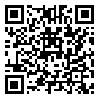Volume 11, Issue 11 (January 2018)
Qom Univ Med Sci J 2018, 11(11): 12-21 |
Back to browse issues page
Download citation:
BibTeX | RIS | EndNote | Medlars | ProCite | Reference Manager | RefWorks
Send citation to:



BibTeX | RIS | EndNote | Medlars | ProCite | Reference Manager | RefWorks
Send citation to:
Dadvand S S, Daryanoosh F, Eghbali E. Changes of Glycosylated Hemoglobin, Insulin Resistance Index, and Plasma Lipids levels Following a Period of Circuit Resistance Training in Male Patients with Type 2 Diabetes. Qom Univ Med Sci J 2018; 11 (11) :12-21
URL: http://journal.muq.ac.ir/article-1-1032-en.html
URL: http://journal.muq.ac.ir/article-1-1032-en.html
1- 1Department of Exercise Physiology, Faculty of Physical Education & Sport Sciences, University of Guilan, Rasht, Iran.
2- Department of Exercise Physiology, Faculty of Education & Psychology, University of Shiraz, Shiraz, Iran. ,daryanoosh@shirazu.ac.ir
2- Department of Exercise Physiology, Faculty of Education & Psychology, University of Shiraz, Shiraz, Iran. ,
Abstract: (6372 Views)
Background and Objectives: Diabetes is one of the most common health problems with remarkable outcomes. The aim of the present study was to investigate the effect of changes in glycosylated hemoglobin, insulin resistance index, and plasma levels of lipids following a period of circuit resistance training in male patients with type 2 diabetes.
Methods: In this semi-experimental study, 20 men with type 2 diabese, were randomly selected and divided into two experimental (n=10) and control (n=10) groups. The experimental group performed circuit resistance training for 8 weeks, 3 sessions per week with 60-80% of one repetition maximum (1RM). The variables measured before and after training program included blood levels of glycosylated hemoglobin, insulin resistance index, fasting blood glucose, total cholesterol, triglycerides, HDL-cholesterol, and LDL-cholesterol. Data were analyzed using dependent and independent t-tests at the significance level of p<0.05.
Results: In this study, 8 weeks of circuit resistance training caused a significant decrease in insulin resistance index and fasting blood glucose in the experimental group compared to the control group (p<0.05), but no significant differences were observed in blood levels of glycosylated hemoglobin, triglyceride, total cholesterol, HDL-cholesterol and LDL-cholesterol (p>0.05).
Conclusion: Circuit resistance training can be taken into consideration as a non-drug therapy for health of men with type 2 diabetes.
Methods: In this semi-experimental study, 20 men with type 2 diabese, were randomly selected and divided into two experimental (n=10) and control (n=10) groups. The experimental group performed circuit resistance training for 8 weeks, 3 sessions per week with 60-80% of one repetition maximum (1RM). The variables measured before and after training program included blood levels of glycosylated hemoglobin, insulin resistance index, fasting blood glucose, total cholesterol, triglycerides, HDL-cholesterol, and LDL-cholesterol. Data were analyzed using dependent and independent t-tests at the significance level of p<0.05.
Results: In this study, 8 weeks of circuit resistance training caused a significant decrease in insulin resistance index and fasting blood glucose in the experimental group compared to the control group (p<0.05), but no significant differences were observed in blood levels of glycosylated hemoglobin, triglyceride, total cholesterol, HDL-cholesterol and LDL-cholesterol (p>0.05).
Conclusion: Circuit resistance training can be taken into consideration as a non-drug therapy for health of men with type 2 diabetes.
Keywords: Circuit Resistance Training, Glycosylated Hemoglobin, Insulin Resistance Index, Plasma Lipids levels, Type 2 Diabetes.
Type of Study: Original Article |
Subject:
فیزیولوژی ورزشی
Received: 2016/07/21 | Accepted: 2016/11/21 | Published: 2018/01/15
Received: 2016/07/21 | Accepted: 2016/11/21 | Published: 2018/01/15
Send email to the article author
| Rights and permissions | |
 |
This work is licensed under a Creative Commons Attribution-NonCommercial 4.0 International License. |







